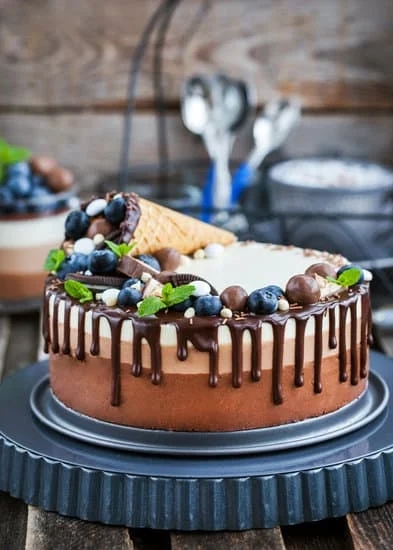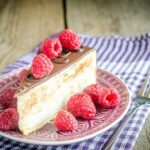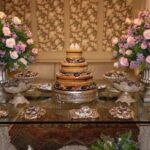Are you looking to elevate your cake decorating skills? One simple yet essential ingredient you may be overlooking is water. In this article, we will delve into the art of using water in cake decorating and how it can significantly enhance the overall look of your creations. From adhering decorations to smoothing out icing, the role of water in cake decorating cannot be underestimated.
Water plays a crucial role in various aspects of cake decoration, acting as a versatile tool that helps achieve desired effects. Whether you are looking to create intricate designs or simply need to secure fondant decorations, the right consistency of water can make all the difference. By understanding how to utilize water effectively, you can take your cake decorating skills to new heights and achieve professional-looking results.
In the upcoming sections, we will explore different types of water suitable for cake decorating, provide tips on creating the perfect consistency for various techniques, discuss essential tools needed when using water in decorating, and highlight common mistakes to avoid. Additionally, we will share creative ways to incorporate water in your cake decorating projects and inspire you to experiment with innovative techniques. Stay tuned as we uncover the secrets behind making water work wonders in cake decorating.
The Role of Water in Cake Decorating
The key ingredient in cake decorating that often goes unnoticed is water. Water plays a crucial role in various aspects of cake decorating, enhancing the overall look and finish of the cake. One of the main purposes of water in cake decorating is to adhere decorations to the surface of the cake.
Whether you’re attaching fondant shapes, edible flowers, or intricate designs made from royal icing, water acts as a glue to secure these elements in place. By using water strategically, you can ensure that your decorations stay put and create a visually appealing final product.
In addition to adhering decorations, water also helps in smoothing out icing on cakes. When frosting a cake with buttercream or ganache, dipping an offset spatula or bench scraper in water can help achieve a smoother finish. The moisture from the water aids in spreading and gliding the icing over the cake’s surface more easily.
This technique is especially handy when working with intricate designs or creating a smooth fondant-covered cake. By incorporating water into your cake decorating process, you can achieve professional-looking results with clean lines and flawless finishes.
While using water for cake decorating may seem simple, there are certain considerations to keep in mind to ensure optimal results. It’s important to use clean, clear water without any added flavors or impurities that could affect the taste or appearance of your creations.
Tap water is usually sufficient for most cake decorating needs, but distilled water can be used for more delicate techniques where clarity is crucial. Experimenting with different types of water can help you determine what works best for your specific projects and desired outcomes.
| Role | Benefits |
|---|---|
| Adhering Decorations | Water acts as glue to secure decorations on the cake |
| Smoothing Out Icing | Water helps spread and glide icing easily for a smoother finish |
Types of Water Suitable for Cake Decorating
When it comes to cake decorating, the type of water you use can have a significant impact on the final outcome of your creation. Different types of water offer varying effects and results, so it’s essential to understand the differences between them. Let’s take a closer look at the various options for water suitable for cake decorating and how they can affect your cakes.
Tap Water
Tap water is readily available in most households and is often the go-to choice for many bakers. While tap water is convenient, it’s crucial to consider the quality of the water in your area. Hard water, which contains high levels of minerals, can affect the taste and appearance of your cakes. If you choose to use tap water for cake decorating, consider using a filter to remove impurities that may impact your final product.
Distilled Water
For those looking for a pure and clean option, distilled water is an excellent choice for cake decorating. Distilled water goes through a process that removes impurities and minerals, resulting in a neutral taste and clear appearance when used in decorating. This makes it ideal for creating vibrant colors with food coloring or achieving a smooth finish on icing without any unwanted flavors or residues.
Flavored Water
For more adventurous bakers, flavored waters can add an extra dimension to your cake decorating projects. Flavored waters such as rosewater, lavender water, or fruit-infused waters can impart subtle yet delightful tastes to your cakes while also adding unique aromas. When using flavored water for cake decorating, ensure that the flavor complements the other ingredients in your recipe and doesn’t overpower the overall taste of the cake.
Experimenting with different types of water can open up a world of possibilities in cake decorating. Whether you opt for tap water, distilled water, or flavored water, understanding how each type affects your final result will help you achieve the desired look and taste in your creations. By selecting the right type of water for your cake decorating projects, you can elevate your designs and impress everyone with stunning cakes that not only look beautiful but taste delicious too.
Tips for Making Perfect Water for Cake Decorating
Water is a crucial element in cake decorating as it plays a significant role in achieving flawless designs and professional finishes. The right consistency of water can help adhere decorations, smooth out icing, and create stunning effects on your cakes. Knowing how to make water for cake decorating is essential for any baker looking to take their creations to the next level.
Here are some tips for making the perfect water for cake decorating:
- Start with clean water: Make sure to use clean, fresh water when preparing your water for cake decorating. This will prevent any unwanted particles or flavors from affecting the final result.
- Consistency is key: Depending on the technique you’re using, you may need different consistencies of water. For example, for delicate details, you’ll want a thinner consistency, while for adhering decorations, a slightly thicker consistency may be required.
- Additives and flavorings: Consider adding extracts or food coloring to your water to enhance the overall look of your cake. Just be sure not to add too much liquid that could affect the texture of your icing or fondant.
By following these steps and experimenting with different techniques, you can master the art of creating the perfect water for cake decorating. Remember that practice makes perfect, so don’t be afraid to try out new ideas and methods to see what works best for your unique creations.
Tools for Using Water in Cake Decorating
When it comes to using water in cake decorating, having the right tools can make a significant difference in achieving the desired results. Whether you are looking to adhere decorations to your cake or create intricate designs with water, having the appropriate tools at your disposal is essential. Here are some of the essential tools needed when using water in cake decorating:
First and foremost, having a set of food-safe brushes is crucial for applying water to various parts of the cake. These brushes come in different sizes and shapes, allowing for precision when adding water to specific areas. From adhering fondant decorations to creating patterns with color dust, brushes are versatile tools that every cake decorator should have.
Another handy tool for using water in cake decorating is a spray bottle. A spray bottle allows you to mist water onto the surface of the cake evenly, providing a smooth base for decorating. Additionally, a spray bottle can be used to create unique effects like spraying edible metallic paints or luster dust onto the cake for a shimmering finish.
Lastly, droppers are excellent tools for controlling the amount of water used in delicate designs or detailed work. By using droppers, you can add tiny drops of water precisely where needed without oversaturating the cake. This level of control is especially useful when working on intricate sugar flower designs or hand-painted details on cakes.
Overall, having these essential tools for using water in cake decorating will help elevate your skills and allow you to explore different techniques with ease.
| Tool | Use |
|---|---|
| Food-safe brushes | Applying water accurately |
| Spray bottle | Misting water evenly on cakes |
| Droppers | Precision control over adding water |
Common Mistakes to Avoid When Using Water in Cake Decorating
Using Too Much Water
One common mistake in cake decorating is using too much water when trying to adhere decorations or smooth out icing. Excess water can cause the decorations to slide off the cake or create a soggy mess. To avoid this, it is important to use water sparingly and gradually add more if needed. A good tip is to use a brush or dropper to control the amount of water being applied to the cake.
Using Too Little Water
On the flip side, using too little water can also lead to difficulties in cake decorating. When water is not enough, it may be challenging to adhere decorations properly or achieve a smooth finish on the icing. To prevent this issue, make sure to moisten the surface where you want to apply decorations evenly. If needed, lightly spray some water on your tools for easier application.
Achieving the Right Consistency
To avoid both using too much or too little water in cake decorating, it’s crucial to achieve the right consistency of water for different techniques. The perfect consistency of water should be thin enough to glide smoothly on the surface of the cake but thick enough to hold decorations in place. Experiment with different amounts of water until you find what works best for your specific decorating needs.
Creative Ways to Use Water in Cake Decorating
Water is a versatile tool in cake decorating, offering endless possibilities to enhance the overall look of your creations. By learning how to make water for cake decorating, you can unlock a range of creative techniques that will take your cakes to the next level. From creating watercolor effects to using water for intricate designs, there are countless ways to incorporate this simple ingredient into your decorating process.
To achieve stunning watercolor effects on your cakes, you’ll need to prepare a blend of edible food coloring and water. This mixture can be used with a brush or spray bottle to create beautiful, ethereal designs that add depth and dimension to your creations. By experimenting with different color combinations and application techniques, you can achieve unique and artistic results that will wow your guests.
Intricate designs can also be achieved by using water in cake decorating. Whether you’re looking to create delicate lace patterns, fine lines, or textured effects, water can be a valuable tool in achieving precision and detail.
By using droppers, brushes, or even just your fingertips, you can manipulate the flow of water to create intricate designs that elevate the overall aesthetic of your cakes. Experiment with different tools and techniques to discover the limitless possibilities that water offers in cake decorating.
- Prepare edible food coloring and water for creating stunning watercolor effects
- Experiment with different tools such as brushes or spray bottles for application
- Use droppers, brushes or fingertips for intricate designs
Conclusion
In conclusion, understanding the importance of water in cake decorating can truly take your creations to the next level. From helping decorations adhere to providing a smooth finish on icing, water plays a crucial role in achieving professional-looking cakes. By exploring the various types of water available, such as tap water, distilled water, and flavored water, you can experiment with different effects and outcomes in your decorating endeavors.
To ensure success in your cake decorating projects, it is essential to know how to make water for cake decorating that is of the perfect consistency. Whether you are using it to attach fondant decorations or create intricate designs with royal icing, following the tips provided in this article will help you achieve the desired results. Remember to utilize tools like brushes, spray bottles, and droppers when working with water to ensure precision and control over your decorating techniques.
As you delve into the world of cake decorating, always be mindful of common mistakes like using too much or too little water. Through practice and patience, you can master the art of using water effectively in your creations.
Challenge yourself to think outside the box and experiment with creative ways to incorporate water into your designs, whether through creating beautiful watercolor effects or adding unique textures to your cakes. Embrace the versatility of water in cake decorating and unleash your creativity to produce stunning confections that will impress both yourself and others.
Frequently Asked Questions
How Do You Make Water for a Cake?
Water plays a crucial role in making a cake by hydrating the dry ingredients, helping them bind together. It also creates steam during baking, contributing to the cake’s airy texture.
How Do You Make Water Like Icing?
To make water-like icing for cakes or cookies, you typically combine powdered sugar with a small amount of liquid (such as water or milk) until you achieve a smooth, pourable consistency suitable for drizzling or spreading.
What Can I Substitute for Piping Gel?
If you need to substitute piping gel in a recipe, alternatives like corn syrup, agar agar, or homemade sugar glaze can be used depending on the desired consistency and purpose. These substitutes can help achieve similar results in decorating cakes and pastries.

Welcome to our cake decorating blog! My name is Destiny Flores, and I am the proud owner of a cake decorating business named Cake Karma. Our mission is to provide delicious, beautiful cakes for all occasions. We specialize in creating custom cakes that are tailored specifically to each customer’s individual needs and tastes.





